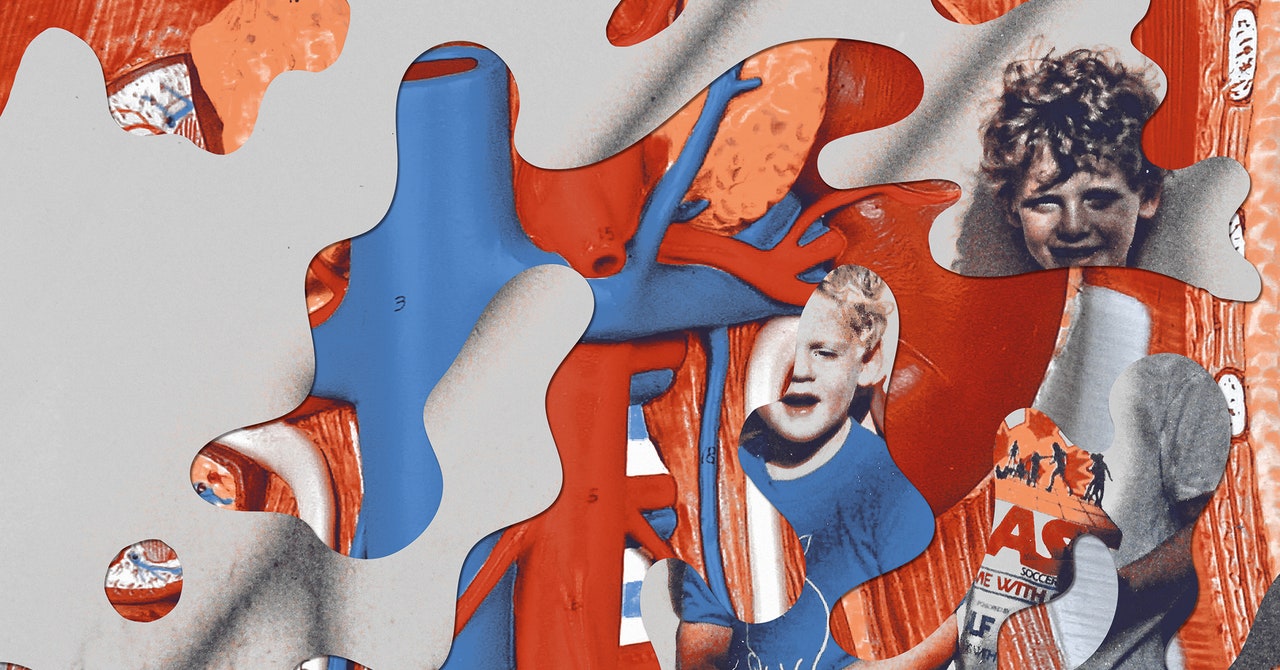
When we were teenagers, my brother and I received kidney transplants six days apart. It wasn’t supposed to be that way. He, two years older, was scheduled to receive my dad’s kidney in April of 1998. Twenty-four hours before the surgery, the transplant team performed its final blood panel and discovered a tissue incompatibility that all the previous testing had somehow missed. My brother was pushed onto “the list,” where he’d wait, who knows how long, for the kidney of somebody who had died and possessed the generous foresight to be a donor after death. I was next in line for my dad’s kidney. We matched, and the date was set for August 28. Then my parents got a call early in the morning on August 22. There had been a car crash. A kidney was available. As with many things in life, my brother went first and I followed.
His operation went smoothly. Six days later, it was my turn. I remember visiting the doctor shortly before the transplant, feeling the pinprick and stinging flush of local anesthetic, then a blunted tugging, the nauseating and strange sensation of a dialysis catheter withdrawn from below my collarbone. I remember, later, the tranquil fog of midazolam as I was rolled to the OR.
I remember waking from great depths after surgery under bright lights and shivering violently, then falling back asleep. I remember lying naked under blankets in the ICU, mildly delirious from morphine while watching a movie about a plane crash in the Alaskan wilderness, with Anthony Hopkins and Alec Baldwin fleeing a giant grizzly bear. I remember friends visiting me on the recovery floor, and how it hurt to laugh.
But now that 24 years have passed, all in relatively good health, I can recognize how much I’ve forgotten. I forget the short leash of dialysis from the months before my transplant: those oversize recliners deep inside the taupe core of a hospital building where, three times a week, machines drained and recycled my blood. I forget the plainness of a low-potassium, low-phosphorus, low-salt diet. I forget how bizarre it is that a few pills in the morning and a few at night keep the foreign organ in my lower abdomen alive—keep me alive. I, regrettably, lose sight of the supreme gift I’ve been given, this indefinite allowance of extra time, while 90,000 other Americans wait for this same gift, often on dialysis for years. Roughly 4 percent will die every year still waiting, and another 4 percent will become too sick to undergo major surgery. But here I am, forgetting this grace.
Five years ago, my brother’s kidney began to fail, and all of these buried memories resurfaced. His blood tests returned erratic levels, and nephrologists fretted. He was in and out of the hospital with recurring viral infections. A biopsy revealed necrotic tissue perforating half his kidney, webbed throughout like the tunnels of an ant colony. Finally, in May of 2018, he sent an email to family and friends, distilling the two borrowed decades during which he had attended concerts, hiked the Pacific Northwest, fallen in love, gotten married, started a family. All of these details were offered with a kind of chummy lightheartedness, but, as every reader knew, they barreled toward the inevitable and awkward conclusion. He was 37 years old and back in the hunt for a kidney. Would you be so kind as to consider … ?
The first successful kidney transplant took place in Boston in 1954 between a deliriously ill Richard Herrick and his identical twin brother, Ronald. Eight years later, his new kidney still doing its job, Richard died of a heart attack. Scattered attempts had come before then. In Ukraine, in 1933, the kidney of a 60-year-old man with type B blood who’d been dead for six hours was transplanted into a 26-year-old woman with type O blood who’d lost kidney function after poisoning herself. The recipient survived for two more days, which is miraculous considering the technology, circumstances, and general knowledge at the time. A transplant recipient in Chicago, in 1950, had some additional kidney function for a few months. Paris became a hotbed of experimentation in the early ’50s. Then came the Herricks.
Their story was technically dazzling but left unsolved the central biological puzzle of transplantation: how to tame the immune system. In most cases, our bodies recognize foreign tissue and send a battery of B and T cells to kill it. As identical twins with identical-enough tissue types, the Herricks sidestepped this problem. But doctors would need a solution to our innate immune response if kidney transplants were ever to become a mainstream procedure. Early efforts subjected patients to full-body preoperative blasts of X-ray radiation at borderline-lethal doses. The intent was to crush the immune system, then let it rebuild with the new kidney in place. This was sometimes accompanied by an injection of bone marrow. Most patients died from organ rejection, graft-versus-host disease, or both. The field of transplant surgery grew insular and desperate. Citing the fundamental precept of avoiding unnecessary harm, the more conservative medical practitioners of the day vilified the practice. Around this time, one detractor wondered, “When will our colleagues give up this game of experimenting on human beings? And when will they realize that dying, too, can be a mercy?”


